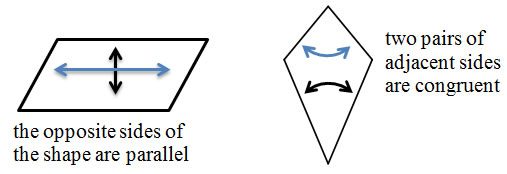
This lesson is all about vocabulary. Hopefully, these are all terms that you knew before, and I'm just reminding you and refreshing your memory.
Polygons are one of the largest named groups of geometric shapes. A polygon is a closed shape, that doesn't cross itself, that is made of straight sides connected end-to-end.

In this list, the words in bold are the ones that are most likely to be introduced first. Words in italics are often used to represent the mathematical vocabulary words in early grades.
A shape can have angles, and each angle can have properties:

Angles within a shape can be compared. Pairs of angles can be described as being:



These words are usually used together to describe a property of a shape. For example, a (carefully stated) property would be: "the shape has at least one pair of opposite equal angles" or "the shape has two adjacent angles that are right angles"

A shape can have sides. The sides of a 2-dimensional shape are called edges. Edges can be straight or curved. The sides of a 3-dimensional shape are called faces. The line where two faces meet on a 3D shape is also called an edge. Faces can be flat or curved. The corner point in an angle is called a vertex (the plural of vertex is vertices).

Pairs of sides in a (2-dimensional) shape can be compared. Pairs of sides can be

Examples: "the opposite sides of the shape are parallel", "two pairs of adjacent sides are congruent"

Horizontal and vertical are important words, but they aren't geometric properties that would be used to define shapes because they describe how the shape looks from a particular orientation, and they change if you turn the shape to a different orientation.
Some properties of shapes describe the whole shape and not just a side or angle. A shape can be:


